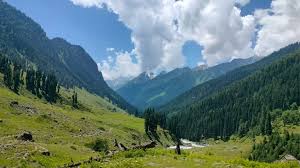The Indian Himalayas are full of hidden treasures that go far beyond the popular tourist circuits. If you’re a trekker who craves untouched wilderness, fewer crowds, and raw Himalayan beauty, two trails you must have on your radar are the Warwan Valley Trek and the Brammah Valley Trek. Nestled deep in the remote corners of Jammu and Kashmir, these treks offer surreal landscapes, dramatic mountain passes, and the kind of offbeat experience you’ll brag about for years.
Warwan Valley Trek: Kashmir’s Best Kept Secret
Introduction to Warwan Valley
Tucked away in the lesser-known corner of Jammu & Kashmir, Warwan Valley is a pristine region in the Kishtwar district. The Warwan valley trek is a high-altitude crossover route connecting Panikhar in the Suru Valley (Ladakh) to Warwan in Kashmir. What makes this trek extraordinary is the transition it offers—from the arid moonscapes of Ladakh to the lush green meadows and forests of Kashmir.
Highlights of the Warwan Valley Trek
- Trekking through pine forests, glacial rivers, and alpine meadows
- Stunning view of Nun-Kun peaks, Kashmir’s highest mountains
- Remote villages like Denora and Kalapari that are untouched by modern life
- Warwan River’s turquoise streams flowing beside the trail
Why Warwan Valley Is Special
This trek is pure Himalayan magic—there are no lodges, no roads, no network. You’re completely disconnected from the world, and that’s the charm. The silence here is therapeutic, the landscapes untouched, and the people incredibly warm.
Best Time to Visit
Mid-July to September is the best time to do this trek. Before that, the region is inaccessible due to snow.
Brammah Valley Trek: The Crown of Kishtwar
An Overview of Brammah Valley
The Brammah valley trek takes you deep into the Kishtwar Himalayas and gives you close-up views of the majestic Brammah massif. The Brammah peaks rise dramatically above the valley and create an imposing skyline. This region sees almost no footfall from commercial trekking groups, making it ideal for those seeking solitude and adventure.
Highlights of the Brammah Valley Trek
- Base of the iconic Brammah I and II peaks (6,400+ meters)
- Trekking alongside the majestic Darlang River
- Exploring glacier-fed lakes and untouched alpine zones
- Interactions with nomadic Gujjar shepherds who roam the high meadows
Why Choose Brammah Valley
Unlike the Warwan trek that connects regions, the Brammah trek is more about climbing deep into a single pristine valley. The scale of the mountains is immense. You’ll feel like a speck in the vastness of nature. It’s a spiritual journey as much as it is a physical one.
Things to Keep in Mind for Both Treks
- These are remote expeditions: There are no tea houses or shops. You’ll need full trekking support (guide, cook, porters, tents, etc.).
- Permits and permissions: As these areas are close to sensitive regions, inner line permits and special permissions may be required.
- Physical fitness is a must: Both treks involve high-altitude hiking (above 13,000 ft) and require excellent endurance.
- No mobile networks: Once you enter the valleys, you’re completely off-grid. Carry satellite communication if needed.
- Respect local culture: You’ll pass through ancient villages and sacred lands—always be respectful to local traditions and customs.
If you’re craving a Himalayan journey that’s far from the beaten path, the Warwan Valley Trek and Brammah Valley Trek will not disappoint. These treks are not just about reaching a summit or crossing a pass—they’re about experiencing the Himalayas in their rawest, most untouched form. From the colorful meadows of Warwan to the glacial heights of Brammah Valley, every step is a revelation.
Trekking here is like flipping through pages of an ancient storybook, written in snow, stone, and silence.
FAQs
1. Are Warwan and Brammah Valley treks safe?
Yes, but they are remote. Go only with a certified guide or trekking agency familiar with the region.
2. How long are the treks?
Warwan Valley takes about 7–9 days. Brammah Valley is typically 6–8 days depending on the route.
3. What’s the difficulty level?
Both are moderate to challenging treks. Prior trekking experience and good fitness are recommended.
4. Can I do these treks solo?
Not recommended due to remoteness and lack of infrastructure. Always go with support.
5. How do I reach the starting points?
For Warwan Valley, you can start from Panikhar or Inshan. For Brammah Valley, the trek begins near Gulabgarh or Atholi in Kishtwar.



